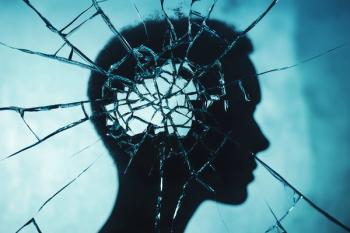
Reading Linehan in the Age of Critical Psychiatry
To read Linehan’s memoir is to realize that she underwent a crucifixion and resurrection of her own, and that the Pontius Pilate in her story is psychiatry itself.
BOOK REVIEW
Building a Life Worth Living: A Memoir
by Marsha M. Linehan; New York: Random House, 2020.
384 pages • $27.00 (hardcover)
Marsha Linehan, PhD, ABPP-the creator of dialectical behavioral therapy (DBT)-needs little introduction. During my residency training, residents in our program were part of “societies” to facilitate socialization and mentorship for junior trainees, and these societies were named after giants in our field such as Kraepelin and Freud. Linehan was among them. Such is her status among psychiatrists of my generation: a towering, god-like intellectual figure, who found a way to help some of the most difficult-to-treat patients in psychiatry. To read Linehan’s memoir,
Before Linehan, Otto Kernberg’s views on borderline personality disorder were predominant. Linehan describes how anger was at the core of Kernberg's model of borderline personality disorder. Psychiatrists trained by Kernberg were primed to look for expressions of anger in their patients, and resultantly that was all that they ever saw, often in a self-fulfilling prophecy: “It seemed that with the Kernberg model, if you tell a patient she is displaying aggression and she denies it, you then tell her that’s just because she isn’t aware of it, and pretty soon that patient really is going to get angry. Then you sit back and say, ‘See what I mean!’” (p300)
Kernberg’s devotees may also see a lot of anger directed at psychiatry in Linehan’s memoir. Such an interpretation would be far from reality, however. She approaches her history of mental health treatment and interactions with psychiatrists with her usual Zen-like acceptance. This is described very well by Greg Simon1 in his wonderful
She endured over-medication, forcible restraint, and weeks spent in a seclusion room. Her descriptions of those traumas are vivid, but they include not the slightest tinge of blame or resentment. Instead, she gracefully expresses gratitude and compassion for her caregivers, knowing they were doing the best they could with the knowledge and skills they had at the time. That is truly radical acceptance . . . I think she is practicing a little DBT on mental health clinicians like me-compassionately accepting all of our failings and flailings while showing us a better way.
In 1961 at the age of 18, Marsha Linehan was admitted to Institute of Living as a psychiatric patient, where she ended up staying for 2 years, and was considered to be among the worst patients in the hospital. The exact nature of her psychiatric condition remains somewhat mysterious (especially when the onset and longitudinal course is taken into account). Linehan herself doesn’t seem to provide a final answer here, but it is clear she displayed a lot of symptoms and behaviors that are considered typical of borderline personality disorder, and Linehan is not opposed to that diagnosis.
The way Linehan was treated as a psychiatric patient at Institute of Living appears to have been of little benefit and may in fact have worsened her condition. She describes being over-medicated and feeling like a “zombie,” as well as receiving electroconvulsive therapy (ECT) and experiencing loss of biographical memories. It is not clear from the book whether the ECT was administered against her will. While these days there are legal safeguards against involuntary administration, I suspect in early 1960s on a long-term inpatient psychiatric unit, the line between voluntary and involuntary administration was blurry. She underwent repeated seclusions and restraints which she believes only reinforced her behaviors. Although Linehan describes the disciplinarian behavior of the nurses in a non-judgmental way, to me they sound more like guards from Zimbardo’s Stanford prison experiment than individuals from a place of healing.
Institute of Living was not her only psychiatric confinement though. Subsequently in her life, she was admitted involuntarily to Cook County Insane Asylum, which she describes as a “Kafkaesque nightmare.” She was deprived of her rights, treated horribly, and the more she tried to demonstrate to the staff that she was competent and did not need to be in the hospital, the more her behaviors were pathologized. She received a diagnosis of schizophrenia. When her family tried to get her out, there were so many bureaucratic hurdles that her brother began to despair, “Can we ever get her out of here?”
I read these episodes of Linehan’s life with shame and emotional turmoil. It is hard to confront the checkered legacy of one’s profession. While some of the practices she describes are now extinct, many others remain part and parcel of current inpatient psychiatric treatment.
Reading Linehan’s memoir, I couldn’t help but place it in the context of the ongoing suicide “epidemic” in US. According to latest CDC data, suicide rate has
We are yet to take seriously the voices and experiences of the consumer/survivor movement. Suicide is complex, and there are no easy answers here. Most psychiatrists are doing the best they can in a system that does not make it easy to be compassionate or empathetic. However, as Linehan proves through her own life and career, we can and must do better, not only as individual psychiatrists but also collectively as a society.
Continued >
Not surprisingly, subsequently in her professional career as a DBT therapist, Linehan saw little of therapeutic value in admitting suicidal patients to inpatient psychiatric units as the default management of suicidality. She writes: "I often found myself tangling with psychiatrists, who made my life difficult. When I went out of town for the weekend and one of my clients had some kind of suicide crisis, the first response of psychiatrists was to admit them to a hospital. There are no data that show that hospitalization saves lives or is useful in any way with suicidal people. I believed then, and still do, that in the majority of cases, suicidal clients do just fine in outpatient treatment." (p188)
Inpatient psychiatric care of course has an appropriate role in the management of suicidality, but Linehan forces us to consider whether this appropriate role is more limited than we currently believe it to be. Psychotherapeutic interventions such as DBT and cognitive behavioral therapy for suicide have demonstrated effectiveness in research studies.5,6 Making these programs widely available and accessible in the community may have far greater impact than current practices. Social determinants of health such as lack of affordable housing, unemployment, and medical debt are also important contributors to increasing suicide rates and should be the focus of intervention by the policy makers.
Linehan is reluctant even to utilize the label “disorder.” She realizes the inherent dangers in medicalizing labels and how they can obscure the nature of constructs. She writes, "I have never been interested in borderline personality disorder as a ‘disorder’ in itself. I have never targeted that. I target suicidal behavior, out-of-control behavior. I don’t think of myself as treating a disorder. I treat a set of behaviors that gets turned into a disorder by others." (p304)
She describes the skepticism with which DBT was received by the psychiatric community:
The psychiatrists thought they had stumped me when they started to claim that suicide is a biological disorder . . . [and] you have to treat it with a drug, electroconvulsive therapy, or something like that-not with behavior therapy . . . I relished these encounters. I’d stand up and say, “I see how suicide must be biological. I have a biological intervention, and I can tell you that right now. It’s DBT, of course. It changes the biology. If it’s a biological problem, and I can change it, then how could I be doing that except by changing the biology?” (p305)
Of course, Linehan is utilizing psychiatrists’ own argument against them, but the reality is that it is illogical to conceptualize suicide as a biological disorder and DBT as a biological treatment. It is like saying that listening to music is a “biological phenomenon.” Surely, when we listen to music there are corresponding changes in the brain, but to call it a biological phenomenon is fundamentally to misunderstand the experience of listening to music. Such a claim only makes sense in the presence of a mindset that reduces psychological phenomena to biological phenomena, and that only sees biological phenomena as having real causal validity. As
This topic is deserving of a more detailed discussion than possible in this review, but I would be remiss if I do not mention here that Linehan lived an immensely spiritual life, and the development of DBT was as much a spiritual undertaking as it was scientific. This aspect of Linehan’s life and work was highly instructive for me, and I believe would be for many other readers as well.
Linehan is not typically seen as a critic of reductionistic, biomedical psychiatry, but as her memoir makes evident, she should be. With this book, she joins the cohort of eminent figures such as
Page numbers refer to the Kindle edition of the book.
Acknowledgement:
Thanks to Dr Elizabeth Ryznar for her valuable comments on an earlier draft of this review.
Dr Aftab is a psychiatrist in Cleveland, OH, and leads the interview series
References:
1. Simon G. Read Marsha Linehan’s book!. Mental Health Research Network. February 5, 2020.
2. Dastagir A. More and more Americans are dying by suicide. What are we missing?. USA Today. Jan 30, 2020.
3. D'Ambrosio A. ED Visits for Suicidal Ideation and Self-Harm on the Rise. MedPage Today. Jan 2020.
4. Ehrmann C. Hospital psychiatric wards now feel like prisons, some say. Associated Press. December 11, 2019.
5. Bloom JM, Woodward EN, Susmaras T, Pantalone DW. Use of dialectical behavior therapy in inpatient treatment of borderline personality disorder: a systematic review. Psychiatr Serv. 2012;63:881-888.
6. Mewton L, Andrews G.
7. Bolton D, Gillett G. The Biopsychosocial Model of Health and Disease: New Philosophical and Scientific Developments. Palgrave Pivot; 2019.
Newsletter
Receive trusted psychiatric news, expert analysis, and clinical insights — subscribe today to support your practice and your patients.













